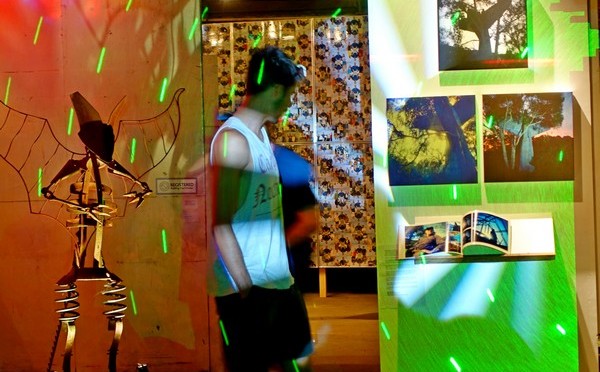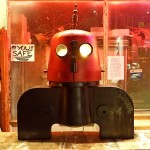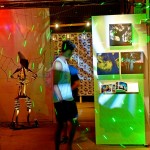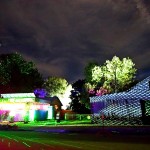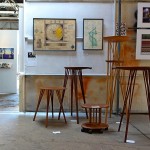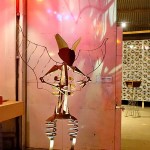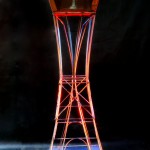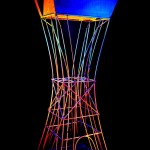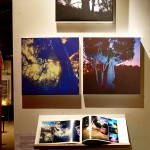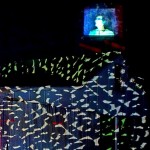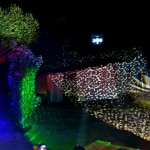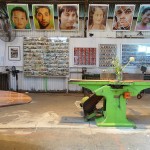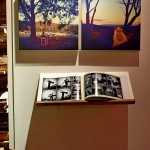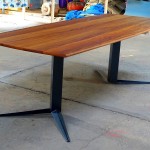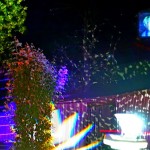Humphrey Poland is a legendary Melbourne builder and designer. His approach to building draws heavily on a craft sensibility to materials, particularly in the use of recycled timbers that have their own story to tell.
Poland was previously a founding partner in the Flying Trapeze Café theatre restaurant in the early 70’s and later worked with the Comedy Café. His current interests include photography and bee-keeping. Today his main workshop is in Moyhu, a small town in the King Valley near Wangaratta.
To coincide with the Great Victorian Bike Ride, Poland curated an exhibition titled Multiples which brought to Mohyu an established and upcoming generation of artists. Much of the work related to wooden patterns that were found in the nearby Valve Foundry.
Here are some words I put together for the opening:
I feel a bit of a fraud speaking to you to this evening. Growing up in the new suburbs of Perth, I had little experience of the industrial world, the remnants of which we see here. I took my world of dreams to Melbourne more than forty years ago, when I saw them realised in the fabled light show of Hugh McSpedden to the music of Spectrum. These dreams came to earth finally at the Meat Market Craft centre, where as writer in residence I felt a craft camaraderie, tapping out sentences alongside jewellers hammering out metal surfaces or woodworkers carving out flourishes.
Yesterday I found a word to describe writing about what you don’t do: ultracrepidarianism. It comes from the tale of Pliny, where a cobbler has the temerity to cast judgement on a painting by the artist Apelles. In anger, the artist declaims, ‘Sutor ne ultra crepidan – Cobbler stick to your last!’
Allow me to stick to this last for a minute. While we tend to think of craft skill as something that is internalised in our bodies, there are some trades where the tricks are embodied in unique templates, like the last for many a shoe. There are stories of cobblers who destroyed their lasts in a bonfire rather than leave them to strangers.
In the post-industrial age of robots and 3d printers, we find ourselves surrounded by the leftovers of the mechanical age. Some believe that these are precious keys to design that need to be preserved. The company Lasting Impressions in Davenport collected abandoned matrices from printing presses as a kind of typographic DNA that one day may need to be resuscitated, Jurassic style.
Others find a new use for these remnants as art, like the sculptor Nicholas Jones who carves abandoned books into unique forms with a surgeon’s scalpel.
What seems special about this exhibition Multiples, is that not only have some artists recovered old wooden patterns used in foundries, but they have taken the logic of production in the creating of work. There are John Comeadows’ fantastic sculptures making the most of the primary colours of the original patterns. Humphrey Poland’s cards use the classic outline of the Christmas tree to produce an unending series of scenes. And Hugh McSpedden’s lightshow casts these shapes into forms that cover the world. Colin Musto has re-framed his technical drawings as works of art. Bill Walker documents the following results in our world that have been shaped by the same pattern.
And it’s heartening to see them also shaping the next generation to follow too. Stuart Sinclair, Joshua Lewis, Malcolm Laurence.
This is a generation that have dedicated themselves to making our world a more livable place. They have left their stamp.
Let’s hope that when god produced them, she didn’t break the mould.
